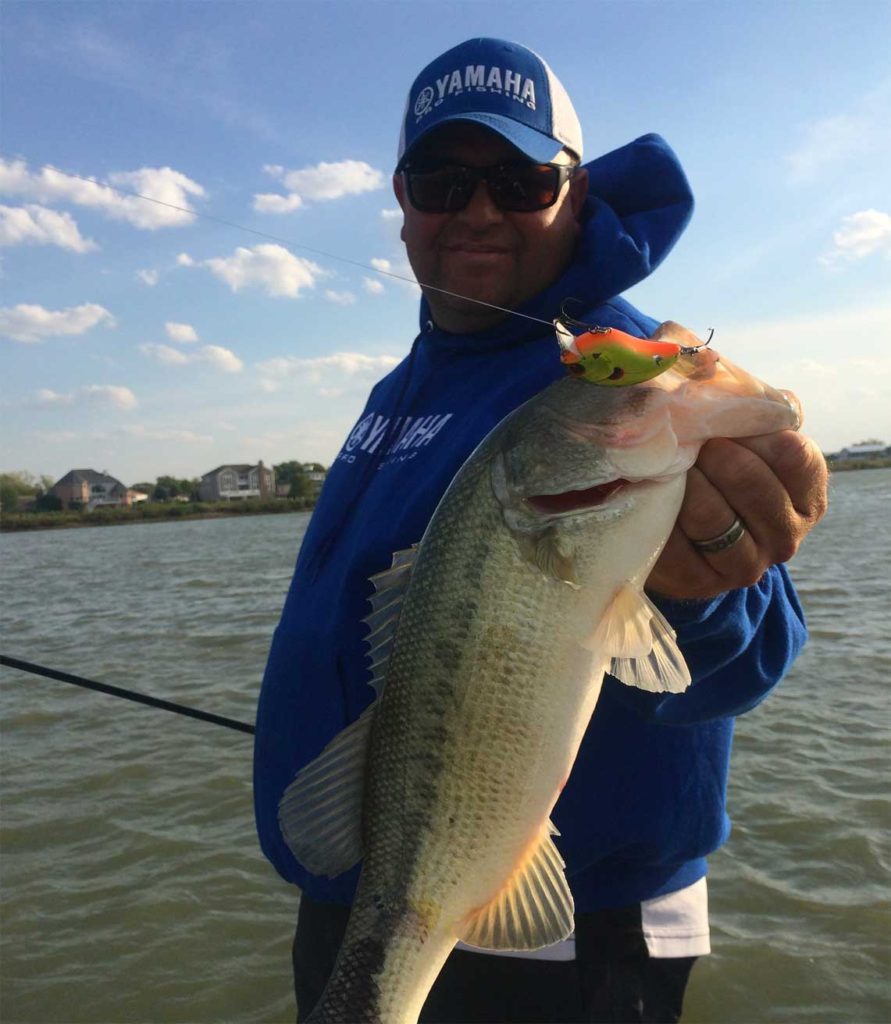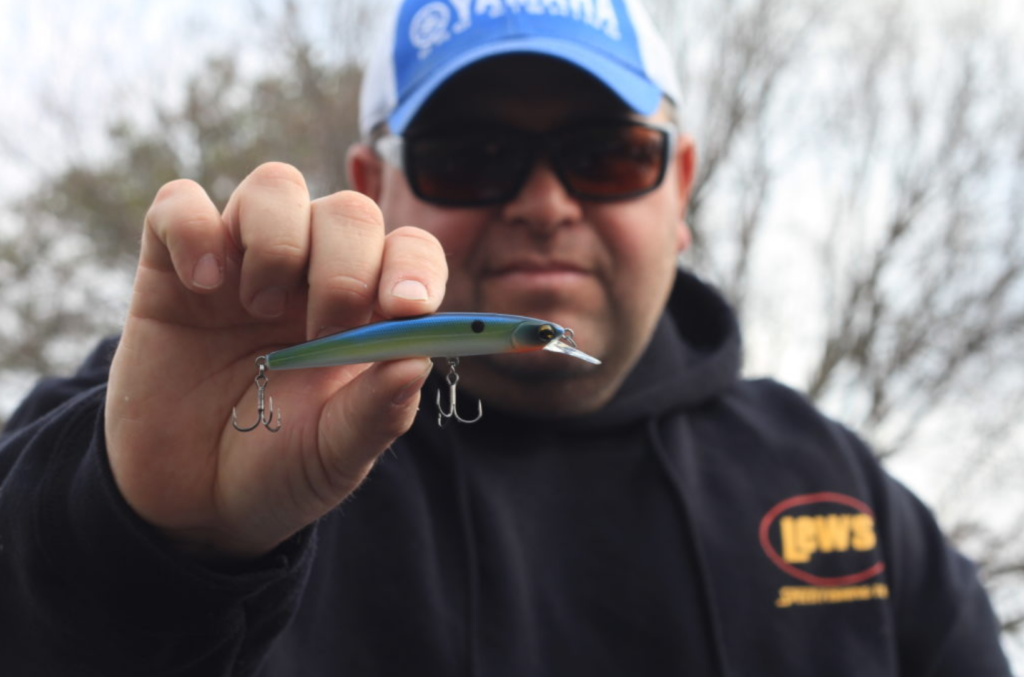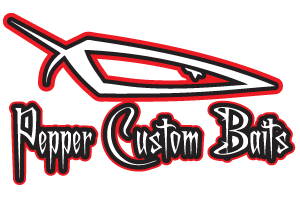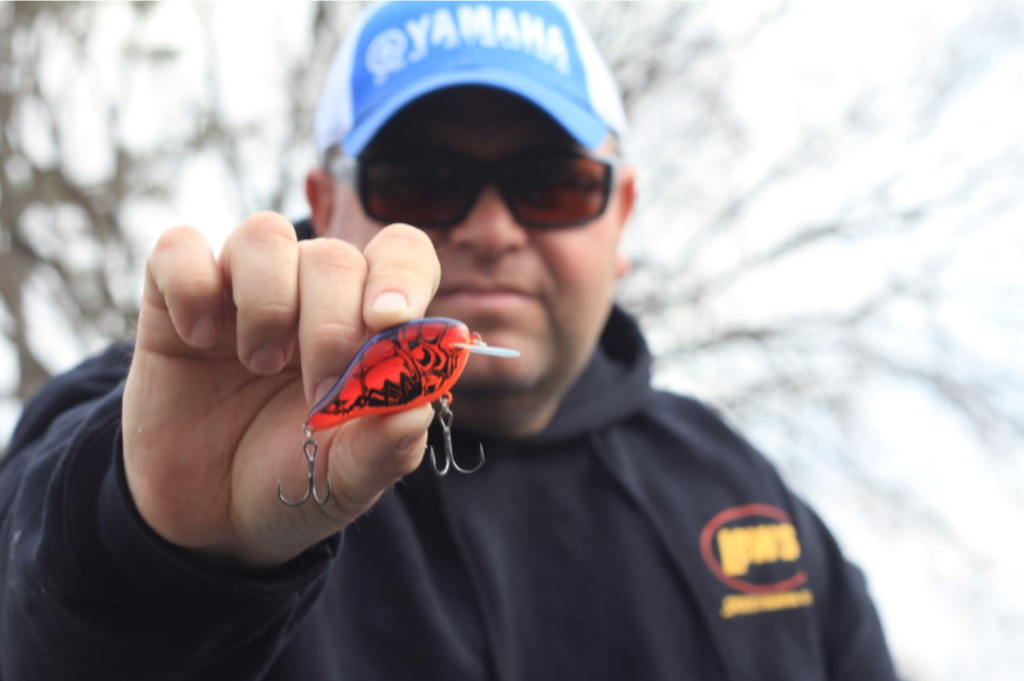When the bite is on, knowing when to use each type of lure can increase your success throughout the year. Jerkbaits, flat-sided and square bill crankbaits all have their time and place and each can outperform the others at times. Bassmaster Elite Series pro Bill Lowen has a method for choosing each and it depends on water clarity, time of year and what cover he is fishing.
Bill Lowen – Water Clarity
The first factor to consider is the water clarity according to Lowen. With jerkbaits being a highly visual technique, clear water is his preferred choice. “Jerkbaits work great in clear water and a bait like a crankbait will do better when the water is dirty. That’s not to say each wouldn’t work in both situations, but I prefer crankbaits when the water is off-color,” he says.
Time of Year
The water temperature and time of year are another deciding factors for when Lowen chooses one reaction bait over another. “Early in a year, I like a bait with a tighter wiggle because the water is colder. The Ima Shaker or a flat-sided balsa bait from PH Customs is my go to,” he says and adds he switches gears as the water warms. “Once the water is a little warmer I like a more round bait like the Ima Square Bill because it has a more aggressive action.”
The Ima Shaker in Hot Crawfish is a go-to for Lowen early in the year.
Square bill crankbaits, with their wide, aggressive action are ideal for water temperature in the 50’s and above according to Lowen. “They have that active grinding and scooting action that is great when the fish are more active,” he says.
Jerkbaits shine early in the year when the water is cold. Lowen reaches for a Flit 120 early in the year and says that the time of year is often cold and windy and a jerkbait is easy to fish in those conditions. “The low 40’s up to the low 50’s water temperature are perfect for a jerkbait. I like the Flit first thing in the spring and then again in the fall. It has a wide slashing and darting action and also works great later in the year and when fishing for smallmouth,” he says. He says a jerkbait is a perfect pre-spawn pattern and he will fish them right up until the bass are in full on spawn-mode.
Location and Approach
In addition to water clarity and temperature, the type of water Lowen is faced with plays a role in deciding which bait to use. “Jerkbaits work great on mainlake and secondary points, those 45-degree banks and places where the rock or bluff transitions,” says Lowen who feels that boat positioning is crucial. “I like to stay two cast lengths away from the bank. If you are one cast length away you might be right above where the fish are, especially if they are suspended or sitting on the first break.”
Both flat-sided and square bill crankbaits shine in shallow water when there is cover present. He will typically fish both in the same areas but will move shallower with a square bill. “Early in the year I like to fish the flat-sided bait around the last deep water inside of a pocket or around a channel swing,” he says and like jerkbaits he feels like boat positioning can help land more bass. “The ideal thing is to fish parallel to the bank so you can keep the bait in the strike zone longer.”

Flats are prime locations for the Ima Square Bill.
As mentioned earlier, he fishes the square bill in the same fashion but will move shallower and key on the first flat after a channel swing or first flat with deep water nearby.
Jerk and Crank Gear
When fishing the crankbaits, Lowen likes a CastAway Skeleton V2 crank rod that is 7’ and has a parabolic bend. “I also use a slower retrieve reel a 5.1:1 Lews BB1Z so I don’t overwork the bait and will spool it with 12-pound Hi-Seas fluorocarbon,” he says.
His jerkbait rod is different than many prefer. “The rod I use is actually a spinnerbait model, a 6’10” CastAway Skeleton V2. It has a softer tip but has a good backbone and I feel like I lose less fish,” he adds. He likes a Lew’s Team Pro Magnesium Speed Spool in the 6.8:1 ratio and 8 or 10-pound fluorocarbon. “The faster retrieve allows you to work the bait with the rod and reel up the slack quickly,” says Lowen.
Retrieves
Another way to increase your success with jerkbaits and crankbaits is to select the right retrieve for the conditions. Lowen also varies his approach based on the bait and where he is fishing.
“The flat-sided crankbait excels once you hit the bottom and are grinding it along. I also do what I call ‘floating’ it through rocks where I reel it as slow as I can to keep it in contact with the bottom,” he says and adds that the properties of the bait work for this technique. “The Ima Shaker doesn’t have near the buoyancy as a square bill so you can keep it closer to the bottom.”
Lowen says Jerkbaits are best with a “twitch, twitch, pause” retrieve and the only change he makes is how long he pauses the bait. “Sometimes you have to wait for 10 or even 30-seconds before you twitch it again. It is hard to do, but sometimes that is the only way to get bit,” he says and feels that water temperature is the biggest factor here. As a general rule of thumb, the colder the water, the longer the pause. To help the bait suspend, he will also add Storm SuspendDots and Strips. “I like to add two on the front bill and two before the back hook to keep it suspending for those long periods.”
When it comes to a square bill, Lowen says making contact with cover is the key. Anything in the water is fair game and the deflection properties of the Ima Square Bill make it ideal for banging into cover.
Color Choices
With so many great jerkbait colors available, it can become complicated deciding which to use. For Lowen, it simply comes down to water clarity, “I like the clear translucent colors in clear water and if the water has a little color I switch to solid colors or something with chrome or gold flash.”

Solid colors like the new Sexy Pearl Shad are Lowen’s pick when the water is slightly stained.
Lowen also has a range of colors that he goes through as the season progresses. This has to do with both the water clarity he is faced with as well as the forage the bass are keying on. “I always start off early in the year with an orange or red pattern and then progress to the brighter chartreuse patterns. After that I move to the fluorescent craw patterns and then finally move to the shad patterns,” shares Lowen. This applies to both his flat-sided baits as well as his square bills.
Bill Lowen is a wealth of fishing knowledge and when it comes to shallow crankbaits and jerkbaits, he has seen it all. His approach to deciding which to use and when comes from years of experience as a professional angler and his approach is something that will help you land more bass.
See the full IMA line up here.

